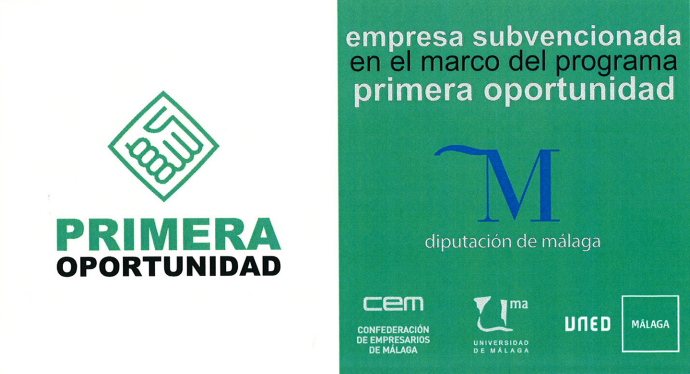What are the main properties of colour?
The colour properties are fundamental to understanding how they affect the emotions and perceptions of consumers, especially in the email marketing. These properties include hue, saturation and lightness. According to several studies, the strategic use of colours can significantly increase conversion rates and customer loyalty. An analysis of current trends shows that vibrant colours are on the rise, especially in campaigns aimed at younger audiences. If you still don't know how to use your corporate colours in your email campaigns, read on! We reveal here the main issues you need to consider:
Tone
The tone is the property of colour that distinguishes one colour from another. For example, red and blue have different shades. In marketing terms, tone can influence the perception of the message. Companies can use different shades to convey different emotions: red for urgency or passion, typical for sales campaigns or promotions; blue for confidence and security, widely used by insurance companies and beauty clinics, etc. According to a study by Loyola University, colour can increase brand recognition by 80%. This demonstrates the relevance of tone in a branding strategy. email marketing, so don't neglect this point in your strategy!
Saturation
The saturation refers to the intensity of a colour. Highly saturated colours are bright and vivid, while colours with low saturation are duller and greyer. In email marketing, the use of highly saturated colours can quickly grab the reader's attention, while less saturated colours can communicate sophistication and seriousness. Neither is better than the other, you simply have to cater to your sales strategy. A HubSpot report indicates that emails with call-to-action (CTA) buttons in saturated colours have a click-through rate up to 21% higher.
Brightness
The luminosity measures the degree of lightness or darkness of a colour. Colours with high lightness are lighter, while colours with low lightness are darker. In the context of email marketingIn the same way, bright colours can be used to highlight important elements, while dark colours can add a touch of elegance or mystery. Research by Campaign Monitor shows that the appropriate use of brightness in emails improves readability and therefore conversion rates.
Want to make the most of colour in your email marketing campaigns?
Properties of colour and its impact on graphic design
Colour theory and its relevance
Colour theory is a crucial aspect of graphic design because it directly influences how a visual piece is perceived and received. The colour properties include hue, saturation and brightness, each of which has a distinct role in creating effectively communicative designs. For example, a warm tone such as red or yellow can evoke feelings of urgency or happiness, while cool colours such as blue and green tend to calm and relax.
Colour Psychology in Marketing
The psychology of colour is another key aspect for small business owners interested in email marketing. According to a study by Loyola University, Maryland, colour has been shown to increase brand recognition by 80%, demonstrating its power and impact. By taking into account the properties of colour, such as hue and saturation, you can influence consumer decisions and increase conversion rates. Colours such as blue are often associated with trust and confidence, which is why they are common in sectors such as finance and technology.
Current trends in the use of colour
In modern graphic design, trends in the use of colour are constantly evolving. Currently, vibrant and saturated colours are gaining popularity, standing out as an effective strategy to capture attention in a saturated market. The properties of colour play a vital role in creating contrasts and visual hierarchies in web design and email marketing campaigns. According to a HubSpot survey, 46% of consumers consider visual design one of the most important factors in deciding a company's credibility.
- Tone: Establishes the emotion of the visual piece.
- Saturation: Controls the intensity of the colour.
- Brightness: Affects the clarity and perception of the design.
How colour properties influence consumer psychology
The Emotional Impact of Colours
Pay special attention to this point because the colour properties play a crucial role in how consumers perceive and react to marketing campaigns. Each colour has the ability to evoke specific emotions and trigger unique psychological responses. For example, red can generate a sense of urgency and excitement, which is why it is commonly used in calls to action such as "Limited time offer! In contrast, blue tends to convey calmness and confidence, and is often used by brands seeking to establish credibility and security. According to a Colorcom study, people make a subconscious evaluation of a product on a 90% based on colour alone.
Strategic use of colour in email marketing
For small business owners interested in email marketing, understanding the colour properties can be the differentiator between a successful campaign and one that goes unnoticed. For example, call-to-action buttons (CTAs) in vibrant hues such as orange or green not only grab attention but also encourage positive interactions. According to a Campaign Monitor report, emails with CTAs in contrasting colours can increase click-through rates by 28%. Implementing a consistent and well-chosen colour palette not only helps with the aesthetics of the email but also with brand promotion.
Colours and Brand Perception
The colour properties are also central to brand perception in the consumer's mind. Some 33% of market-leading companies identify their corporate colour as a key factor in their visual identity, according to the American Marketing Association. Colours can serve to distinguish themselves from the competition and resonate emotionally with the target audience. For example, luxury brands such as Chanel and Gucci opt for sophisticated, neutral colours, while youth-oriented companies such as H&M and Forever 21 prefer brighter, more energetic colours.
How do you combine colour influences with your corporate colours?
Properties of Colour: A Complete Guide for Artists and Designers
Colour Properties
The colour properties play a fundamental role in both art and design, and understanding them is essential for any professional in these fields. These properties are divided into three main categories: hue, saturation and lightness. Hue refers to the general category of colour, such as red, blue or green. Saturation indicates the intensity or purity of a colour, while lightness indicates the amount of light a colour reflects, affecting its brightness.
Matiz (Hue)
Hue is what we commonly understand as the "name" of colour and is one of the essential properties of colour. For example, red, blue and green are different shades. Shades are organised into colour spectra that help designers and artists to select harmonious combinations. According to a Pantone Institute study, more than 60% of purchasing decisions are influenced by colour, underlining the importance of choosing the right hue to attract the consumer's attention.
Saturation (Chroma)
Saturation refers to the intensity or purity of a colour. A highly saturated colour contains no grey and is very vivid, while a less saturated colour appears duller or greyer. In the world of marketing and design, saturated colours are preferred to attract attention and convey energy. For example, call-to-action buttons on websites often use saturated colours to stand out from other visual elements.
Brightness
Luminosity describes how light or dark a colour is in terms of the amount of light it reflects. This property is crucial for creating effective contrasts in design, which is essential for the legibility of text and the separation of visual elements. In the context of email marketingBy making good use of brightness, the reader's eye can be guided to important information, thus improving the conversion rate.
In conclusion, understanding the colour properties The use of colour - hue, saturation and luminosity - is vital for any artist or designer who wants to create visually appealing and functional work. These concepts not only enhance aesthetics but can also influence consumer behaviour, a crucial aspect for small businesses interested in maximising the impact of their digital marketing campaigns.
The science behind the properties of colour and its use in marketing
The science behind the properties of colour and its impact on consumer behaviour is a fascinating field that has captured the attention of psychologists and marketers alike. Colours not only help to capture attention, but also influence consumers' emotions, decisions and behaviours. In fact, according to a study conducted by the Marketing Research Institute, 85% of consumers believe that colour is the main reason they buy a specific product.
Given the overwhelming power of the properties of colour, small business owners can use this science to optimise their email marketing campaigns. Colours such as red and yellow are known to evoke strong emotions and create a sense of urgency, which can be useful during promotions and sales. On the other hand, colours such as blue and green are preferred for being calming and associated with reliability and nature, making them ideal for health or technology-related services.
In addition to emotional associations, the properties of colour are also influenced by culture and context. For example, while white is associated with purity and simplicity in many Western cultures, in some Eastern cultures it may have connotations of mourning. For this reason, it is crucial for small business owners to understand the cultural and demographic context of their target audience in order to choose the most effective colours.
Statistics and current trends
Current trends in the use of colour in marketing also reflect evolving consumer preferences. Recent analysis by Color Communications Inc. shows that 93% of consumers place visual appearance and colour above other factors when considering a purchase. In addition, the use of certain colours in email marketing has been shown to generate significantly higher open and click-through rates. For example, call-to-action buttons in bright colours such as orange can increase click-through rates by up to 32% compared to more neutral colours.
Marketing experts say
According to colour psychology specialist Angela Wright, "the correct use of colour is a powerful way to communicate non-verbally and can provide crucial clues to your audience about the nature of your product or service". This opinion supports the importance of understanding the properties of colour for successful marketing deployments.
In short, understanding and applying the properties of colour in marketing strategies and email marketing campaigns can offer a significant competitive advantage to small business owners.









